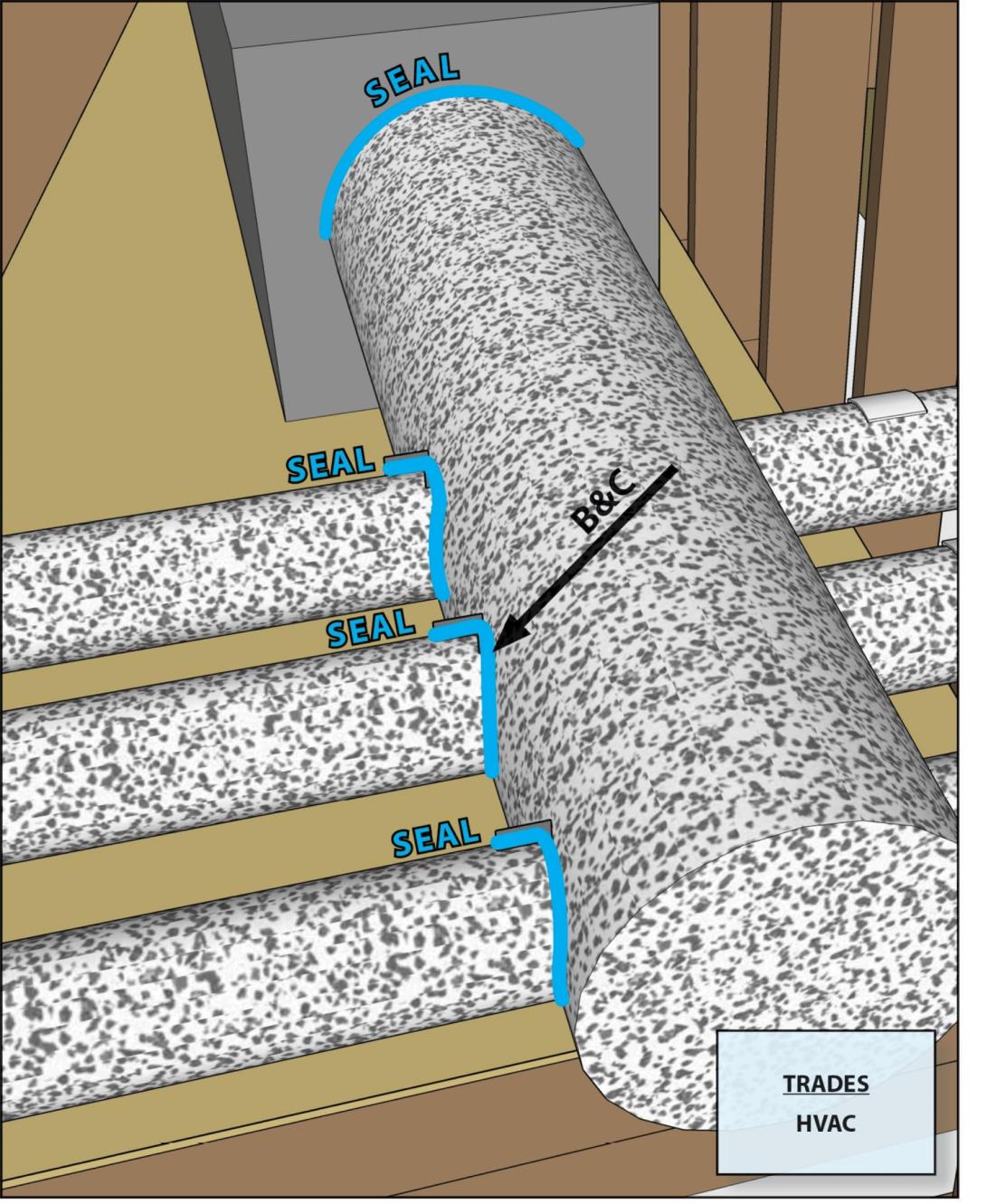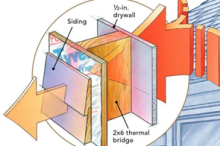Teaching Materials

HVAC High-R Duct Insulation
When metal ducts are located in an unconditioned space, high-R thermal insulation with a vapor barrier can help prevent heat gain or loss through the duct walls and keeps condensation from forming on the ducts. This practice improves both the efficiency and comfort of HVAC systems.
When duct insulation is missing or inadequate, the amount of heat lost or gained as conditioned air travels through the cooling or heating system can be significant. This is especially true when ducts are located in an uninsulated attic or crawlspace. Insulation significantly reduces this energy loss and helps ensure conditioned air is effectively distributed from the air handler to a home’s living spaces.
High-performance ducts should be insulated and sealed at or above levels required for code. The ENERGY STAR program requires a minimum of R-8 duct insulation for ducts located in unconditioned spaces such as attics. Ducts should also be encapsulated in a minimum 1.5 inches of spray foam and buried under a certain volume of blown-in insulation, depending on the climate zone. ENERGY STAR also sets a maximum allowabale rate for duct leakage.
